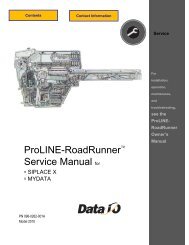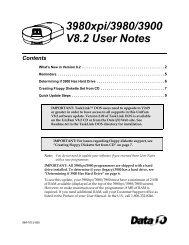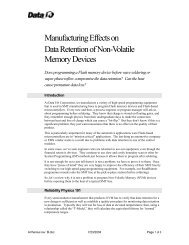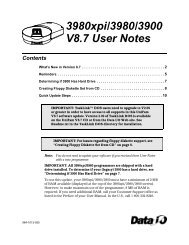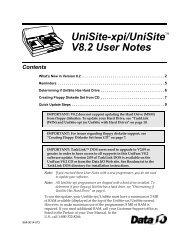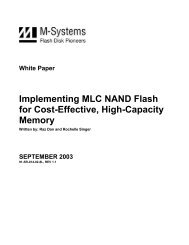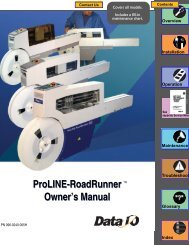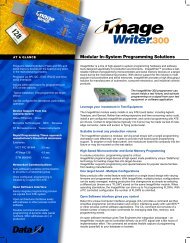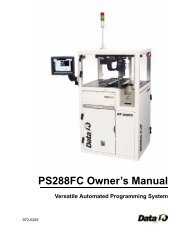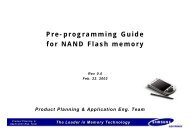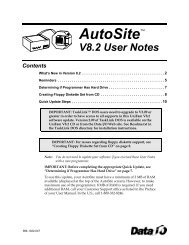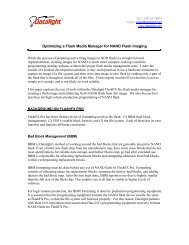3980xpi Users Manual - Data I/O Corporation
3980xpi Users Manual - Data I/O Corporation
3980xpi Users Manual - Data I/O Corporation
Create successful ePaper yourself
Turn your PDF publications into a flip-book with our unique Google optimized e-Paper software.
Optional Parameters<br />
Commands<br />
The Non-default Parameters screen, which contains the preceding<br />
parameters and any default parameters that were changed, is displayed as the<br />
default. The more complex All Parameters screen displays the following<br />
additional parameters. To toggle between the two screens, press F4.<br />
� Illegal Bit Check (Y,N)<br />
Enables (default) or disables the Illegal Bit test, which compares data in a<br />
device against data in programmer RAM to determine if the device has<br />
already-programmed locations of incorrect polarity.<br />
For example, the programmer would return an illegal-bit error if data in<br />
RAM indicates that a specific bit should be in an unprogrammed state but<br />
the corresponding bit in the device is in a programmed state.<br />
The device cannot be programmed if the programmer detects an illegal bit.<br />
� Blank Check (Y,N)<br />
Enables (default) or disables the Blank Check test, which checks a device<br />
for programmed bits.<br />
� Enable Yield Tally (Y,N)<br />
When enabled, directs the programmer to keep a running tally of the<br />
programming yields for the last sixteen types of devices programmed.<br />
These totals show how many devices passed and failed, and what specific<br />
errors, if any, have occurred. The defaults is N. See “Yield Tally” on<br />
page 4-69 for more information.<br />
� Logic Verification (A,F,V)<br />
Specifies the type of logic verification to be performed after programming.<br />
Press SPACE to step through the following three choices:<br />
All (A)—Performs both fuse and vector verification. This is the default.<br />
Fuse Verification (F)—Checks the fuse pattern programmed into the<br />
device with the pattern in the programmer's memory.<br />
Vector Verification (V)—Tests the device using structured test vectors<br />
stored in memory. The programmer does not support vector testing for<br />
logic devices with more than 84 pins.<br />
The programmer does not support vector testing for logic devices with<br />
more than 44 pins.—2900<br />
� Verify Passes (0,1,2)<br />
Selects the number of times to test the device.<br />
0—Do not to test the device.<br />
1—Test the device once at the device manufacturer's nominal Vcc.<br />
2—Verify the device at the device manufacturer's recommended high and<br />
low Vcc levels. This is the default.<br />
� Reject Option (C,S)<br />
Selects the number of times the device is pulsed with programming voltage<br />
before it is rejected as unprogrammable.<br />
C—Selects the number of pulses specified by the manufacturer (the<br />
default). Unless you are programming devices to a strict military<br />
specification, leave this option set to C.<br />
S—Selects either one-pulse or military-specification number of pulses.<br />
<strong>3980xpi</strong>/3980/3900/2900 User <strong>Manual</strong> 4-11




